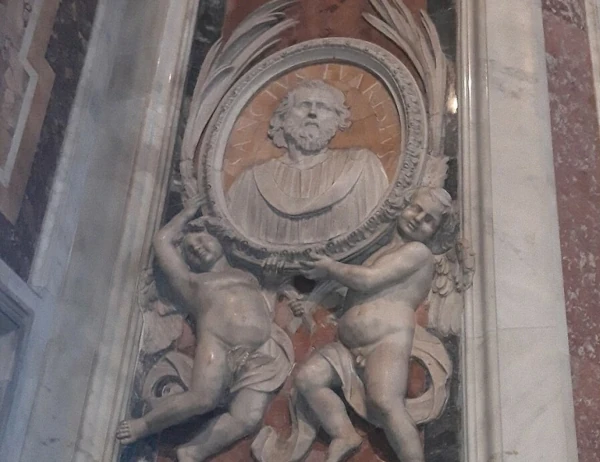In the very early days of our Church, when the faith was new and the followers of Christ faced immense challenges, holy men and women rose to lead and inspire. Among these foundational pillars of our faith stands Pope St. Evaristus, the fifth successor to St. Peter. Though details of his life from nearly two millennia ago can be sparse, what we know paints a picture of a dedicated shepherd who tirelessly worked to organize and nurture the fledgling Christian community in Rome. His feast day on October 26th offers us a wonderful opportunity to reflect on his legacy and draw inspiration for our own lives of faith.
Born of a Hellenic Jewish family in Bethlehem, the very birthplace of our Lord, St. Evaristus carried a unique heritage. He was called to lead the Church around the year 99 AD, a period fraught with peril under the Roman Empire. Imagine the courage and conviction required to guide the faithful in such a hostile environment!
One of St. Evaristus's most significant contributions was his dedicated effort to structure the Church in Rome. Tradition tells us that he was instrumental in dividing the city into "titles" or parishes, assigning priests to each. This was a crucial step in ensuring that the growing number of Christians received proper pastoral care, instruction, and access to the sacraments. He is also credited with appointing seven deacons to assist the Bishop of Rome and to serve as authentic witnesses for him, a testament to his understanding of the importance of organized ministry and shared responsibility within the Church.
These administrative efforts might seem mundane to some, but they were vital for the survival and growth of the early Church. By establishing clear roles and structures, St. Evaristus helped to solidify the community, ensuring that the teachings of the Apostles were faithfully transmitted and that the spiritual needs of the flock were met. He was a builder, laying foundational stones upon which the Church would continue to grow for centuries.
While historical proof of his martyrdom remains debated by scholars, tradition has long held that St. Evaristus did indeed shed his blood for Christ, a common fate for many early Popes who bravely led the Church during times of persecution. He is often depicted with a sword, a symbol of his possible martyrdom, or a crib, a nod to his birthplace in Bethlehem. Regardless of the specific circumstances of his death, his life was certainly one of heroic virtue and unwavering commitment to the Gospel in the face of adversity. He is believed to be buried near the tomb of St. Peter in the Vatican, a fitting resting place for one who faithfully followed in the footsteps of the first Pope.
St. Evaristus's papacy, though shrouded in the mists of early Church history, shines as an example of steadfast leadership and pastoral zeal. He worked to preserve the purity of the Faith at a time when various heresies were beginning to emerge, understanding the critical importance of doctrinal truth. His commitment to organizing the Church demonstrates a profound love for the faithful and a desire to see the community flourish.
As Catholics, we can look to Pope St. Evaristus as an inspiration to:
Embrace our role in building up the Church: Whether through active participation in our parishes, volunteering our talents, or simply living our faith authentically in our daily lives, we all have a part to play. Stand firm in the truth: In a world with many conflicting voices, St. Evaristus reminds us of the importance of adhering to the teachings of the Church, handed down through the ages. Show courage in the face of challenges: The early Christians faced immense difficulties, yet their faith thrived. We too can draw strength from their example when we encounter obstacles in our own journey of faith.Defender of the FaithDuring Evaristus's reign, the Church faced the ever-present threat of persecution under the Roman Empire. While the specifics of his actions are not well-documented, we can assume that he, like his predecessors, provided solace and guidance to the faithful, encouraging them to remain steadfast in their beliefs. His leadership would have been essential in maintaining the Church's unity and resilience during those turbulent times.
Legacy of HolinessSaint Evaristus is remembered as a martyr, although the details of his death are uncertain. He is buried near St. Peter in the Vatican, a testament to his святость and the Church's enduring reverence for its early leaders. His feast day is celebrated on October 26th.
A Model for TodayThough separated from us by centuries, the example of Pope Saint Evaristus remains relevant for Catholics today. His dedication to serving the faithful, his organizational skills, and his steadfastness in the face of adversity offer valuable lessons for Church leaders and all believers. In a world that often seems hostile to Christian values, we can draw inspiration from Evaristus's unwavering commitment to Christ and His Church, striving to emulate his virtues in our own lives.
St. Evaristus, pray for us!

Please or Login to leave Comments